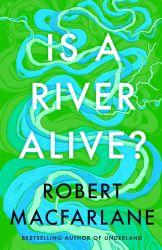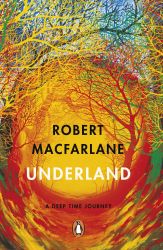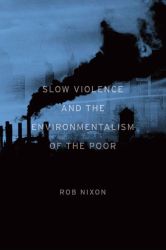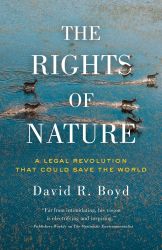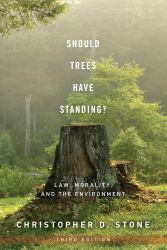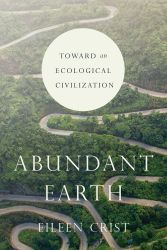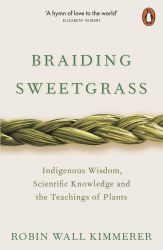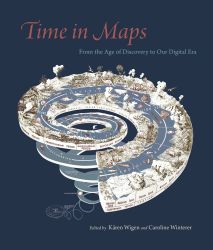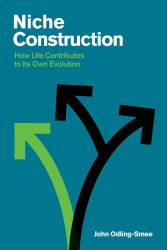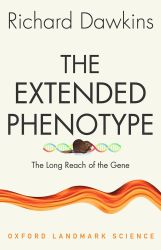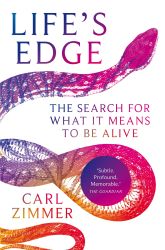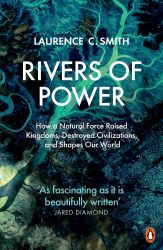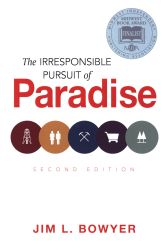7-minute read
keywords: environmental issues, nature writing, rivers
Nature writer Robert Macfarlane will need little introduction, having authored a string of successful books on people, landscape, and language. I was impressed by his 2019 book Underland, so when Is a River Alive? was announced, I decided to spoil myself and purchase the signed Indie Exclusive edition. Billed as his most political book to date, Is a River Alive? is a hydrological odyssey into three river systems that sees Macfarlane wrestle with the titular question and examine its relevance to the nascent Rights of Nature movement.
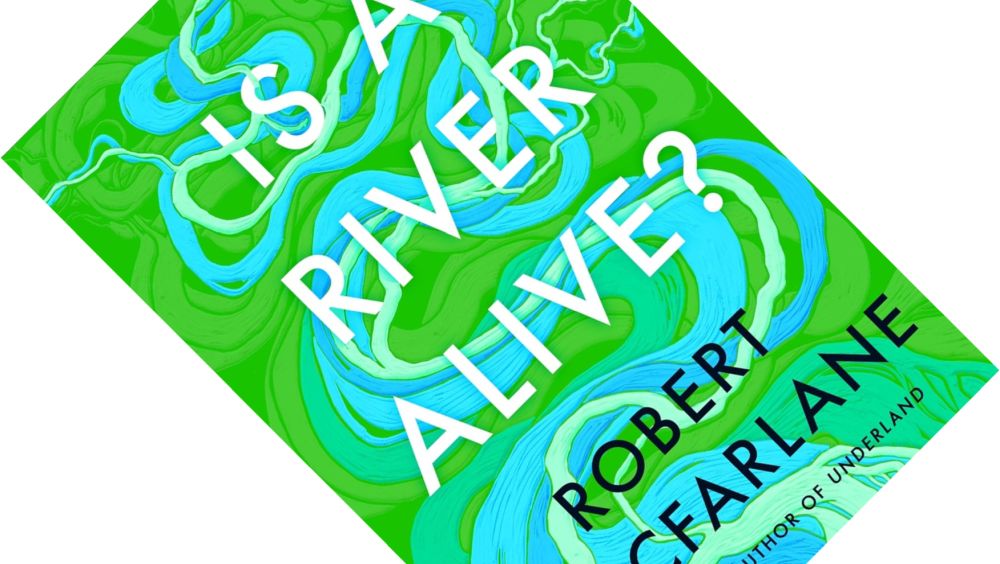
Is a River Alive?, written by Robert MacFarlane, published in Europe by Hamish Hamilton in May 2025 (hardback, 374 pages)
At the heart of this book are three long, 70–100-page parts that detail visits to three river systems in Ecuador, India, and Canada. They are separated by short palate cleansers, describing brief visits to local springs close to his home in Cambridge. In the back, you will find a surprisingly thorough 10-page glossary, notes, a select bibliography, a combined acknowledgements and aftermaths section detailing developments up to publication, and an index.
This dry enumeration aside, it is the quality of the writing that we are all here for, and Macfarlane is on fine form as he immerses you in the landscapes he visits. The Los Cedros cloud-forest in Ecuador is full of trees overgrown by epiphytes, “life [thriving] upon life upon life upon life in a seemingly endless mise en abyme that bewilders the imagination and opens a scale-slide of wonder into which the mind might plummet” (p. 54). In Chennai, southeast India, where he traces the course of three rivers, a hatchery for Olive Ridley sea turtles “resembles a small cemetery, but its logic is inverse: here, burial breeds life” (p. 183). The nature writing aspect is particularly strong in the third part, where he kayaks down the Mutehekau Shipu / Magpie River, where driftwood forms “an ossuary of water-worn river-bones” (p. 269). These journeys are not solo affairs, however, and in each place he is accompanied by knowledgeable local guides: some are long-term collaborators, others he has only just met. It is a motley crew that includes a mycologist, a musician, and a lawyer, as well as judges, activists, back-country experts, and his close friend Wayne Chambliss. Macfarlane has a knack for giving warm and memorable portraits of them, as well as others they meet along the way.
The political aspect of this book stems from the fact that all these river systems are under threat; from mining in Ecuador, industrial pollution in India, and the construction of hydroelectric dams in Canada. In part, the book is a reportage on the environmental harm caused by resource extraction, economic development, and heavy industry, and the slow violence it inflicts on predominantly poor and marginalised communities. In Chennai, he graphically details how this has already come to pass, while in Ecuador and Canada, it could come to pass if certain companies were to get their way. In response, Western and Indigenous activists have rallied behind the Rights of Nature movement that originated in 1972 when lawyer Christopher Stone asked whether trees should have standing. Its proponents argue that natural entities such as mountains, forests, and rivers can and should have rights—legal personhood even—and thus protection by law.
“Macfarlane does not provide a straightforward answer […] Instead, he wrestles with this question in full view of the reader.”
So, is a river alive? What makes this book intriguing and thought-provoking is that Macfarlane does not provide a straightforward answer (“Yes, of course rivers are alive and here is why”). Instead, he wrestles with this question in full view of the reader. Clearly, he supports the environmentalist agenda and quickly counters the claim of anthropomorphism: “To call a river alive is not to personify a river, but instead further to deepen and widen the category of ‘life’” (p. 82). As such, Macfarlane refers to rivers as a “who” and not an “it”, condemning the habit of the English language to “it” all natural entities, “a mode of address that reduces them to the status of stuff” (p. 22). I like to reference the work of Eileen Crist to make the point that language shapes our reality, and Macfarlane condenses it masterfully here: “Words make worlds” (p. 22).
Macfarlane’s struggle plays out along two axes. First, how can we really speak on nature’s behalf? What does a river want? He worries that in granting rights to nature, we will simply end up with “human proxies […] ventriloquizing ‘river’ and ‘forest’ in a kind of cos-play animism” (p. 83). His close friend Wayne justifiably asks whether the whole movement is just “a disguised form of political manoeuvring” (p. 292), in which assigning personhood to natural entities merely becomes a means to an end. Second, there is a philosophical and linguistic struggle. What words can truly capture this? “The history of literature is littered with the debris of attempts to utter water” (p. 289). In searching for a “grammar of animacy” (sensu Kimmerer), he is frustrated with “language’s short reach” (p. 260) and repeatedly runs into a wall: “If you interrogate a mystery, don’t expect answers in a language you can understand” (p. 239). Partially, it seems the answers cannot be verbalised but have to be bodily experienced, as his journeys show him; partially, Indigenous thinking provides him with answers.
On that latter point I have to be honest: though I am supportive of this cause, as a child of the Western, scientific tradition, Indigenous thinking does not resonate with me much, and this is entirely my shortcoming. Macfarlane, it seems, sympathises, struggling with it himself: “It requires unlearning, a process much harder than learning” (p. 19). That said, there are moments where he speaks to the biologist in me. When he discusses the deep-time maps of geologist Harold Fisk that show the many past meanders of the Mississippi River snaking across the landscape, it is hard not to feel that, at that temporal resolution, rivers very much seem alive. Similarly, when mycologist Giuliana Furci points out the consequences of deforestation (when the cloud-forest goes, so do its rivers), you have to wonder: are these rivers a form of niche construction, or even (if you squint hard, I admit) an extended phenotype of a kind? By and large, however, even if life is a fuzzy phenomenon that lacks sharp boundaries, the scientist in me feels that the question is stretching a metaphor beyond its breaking point.
“Is a river alive? Better perhaps to ask: Does it matter? […] this is ultimately about environmental protection, in which case, whether or not a river has vital signs is irrelevant.”
So, I ask again, is a river alive? Better perhaps to ask, I think: Does it matter? Given how entwined life is with water and how dependent human societies are on rivers, the question seems moot to me. For most people, this is ultimately about environmental protection, in which case, whether or not a river has vital signs is irrelevant. However, if personhood is what it takes, given existing legal frameworks, then, sure, why not? A second concern I have is that of enforcement. All these lofty declarations risk being yet more paper parks if they do not have the force of the law behind them. Though Macfarlane does not explicitly raise this point, both his main text and his aftermaths give examples where judges have successfully invoked the Rights of Nature to halt or prevent companies from extracting natural resources. A final concern, as was so clearly argued in The Irresponsible Pursuit of Paradise, is that protective measures risk merely displacing resource extraction to somewhere else with less oversight. As long as there is demand for resources and money on the table, companies will continue extracting value from nature. This deeper cause is not dealt with here, though expecting Macfarlane to imagine the end of capitalism, pretty please, would be a tad unrealistic of me. That is a thorny, multifaceted problem if ever there was one.
Is a River Alive? is an intriguing and thought-provoking piece of nature writing that refuses to give easy answers. I imagine that this is not what Macfarlane’s readers are after anyway, and, if so, they will be amply served by the spectacle of a master wordsmith grappling with a weighty question.
Other recommended books mentioned in this review:
__________________________________________________________________
__________________________________________________________________
__________________________________________________________________

